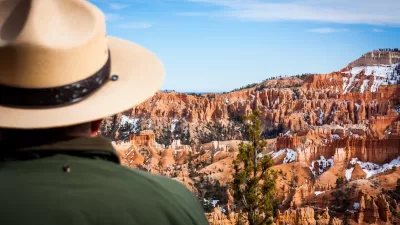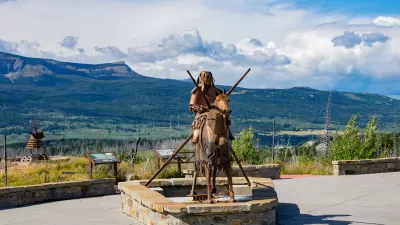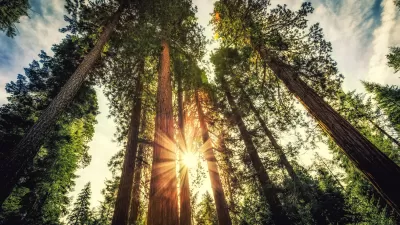Rangeland recently acquired from private owners is being restored to a more natural state thanks to a purchase by the Trust for Public Land.

The largest mid-elevation meadow in Yosemite National Park is undergoing an $18 million restoration project, reports Kurtis Alexander in the San Francisco Chronicle.
Ackerson Meadow was recently acquired from private owners by the National Park Service. “The nonprofit Trust for Public Land bought the property for $2.3 million, with funding assistance from the Yosemite Conservancy, National Park Trust and American Rivers, and donated it to the park service.” After decades as rangeland, the meadow will now be transformed into “a vibrant hub of wildflowers, songbirds and water-loving grasses — an effort billed as the biggest restoration project in Yosemite history.”
Crews are rebuilding the meadow’s wetlands to help the site hold more water for native plants and wildlife. A 3-mile-long gully that was rapidly eroding, a major problem in the meadow, was filled in with soil and native plants. “At 14 feet deep and 100 feet wide, the gully was siphoning water from the area, denying the meadow of its natural ability to absorb and store runoff from rain and snow. The result was a lower water table, dehydrated and dying vegetation and loss of critical wildlife habitat.”
According to Alexander, “The work being celebrated this week is the first of two phases of the project, with other parts of the meadow scheduled for rehabilitation later this year and early next.”
FULL STORY: Photos: Yosemite meadow is largest restoration project in park history

Study: Maui’s Plan to Convert Vacation Rentals to Long-Term Housing Could Cause Nearly $1 Billion Economic Loss
The plan would reduce visitor accommodation by 25,% resulting in 1,900 jobs lost.

North Texas Transit Leaders Tout Benefits of TOD for Growing Region
At a summit focused on transit-oriented development, policymakers discussed how North Texas’ expanded light rail system can serve as a tool for economic growth.

Why Should We Subsidize Public Transportation?
Many public transit agencies face financial stress due to rising costs, declining fare revenue, and declining subsidies. Transit advocates must provide a strong business case for increasing public transit funding.

How Community Science Connects People, Parks, and Biodiversity
Community science engages people of all backgrounds in documenting local biodiversity, strengthening connections to nature, and contributing to global efforts like the City Nature Challenge to build a more inclusive and resilient future.

Alabama: Trump Terminates Settlements for Black Communities Harmed By Raw Sewage
Trump deemed the landmark civil rights agreement “illegal DEI and environmental justice policy.”

Dear Tesla Driver: “It’s not You, It’s Him.”
Amidst a booming bumper sticker industry, one writer offers solace to those asking, “Does this car make me look fascist?”
Urban Design for Planners 1: Software Tools
This six-course series explores essential urban design concepts using open source software and equips planners with the tools they need to participate fully in the urban design process.
Planning for Universal Design
Learn the tools for implementing Universal Design in planning regulations.
City of Santa Clarita
Ascent Environmental
Institute for Housing and Urban Development Studies (IHS)
City of Grandview
Harvard GSD Executive Education
Toledo-Lucas County Plan Commissions
Salt Lake City
NYU Wagner Graduate School of Public Service





























